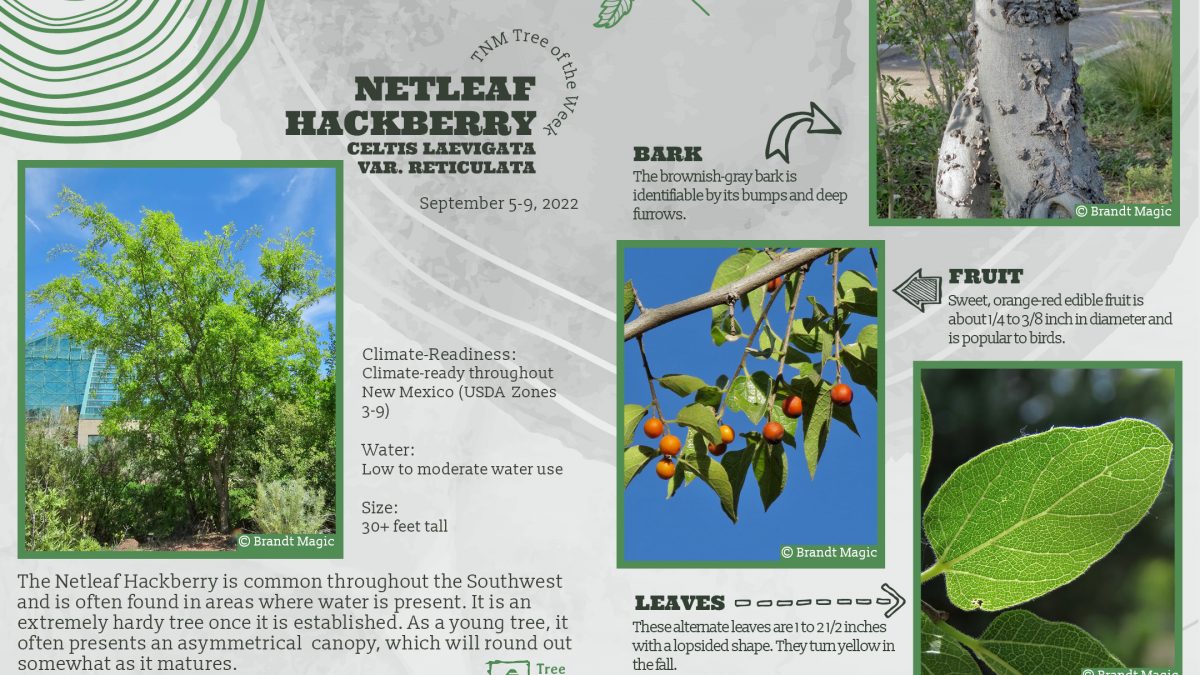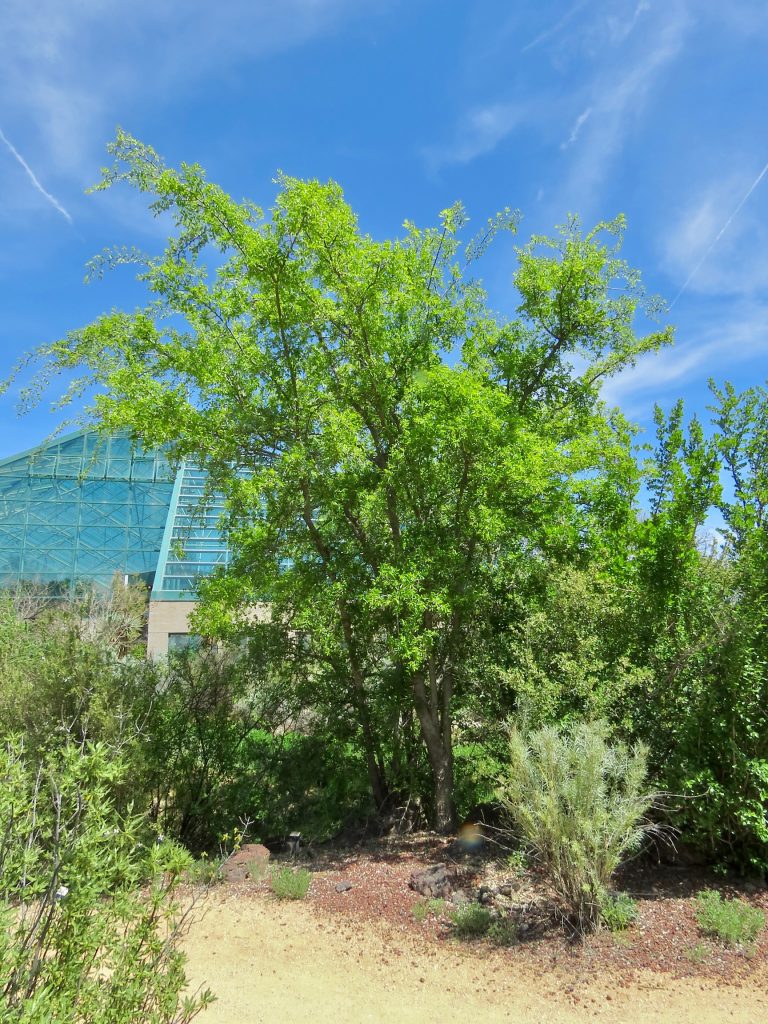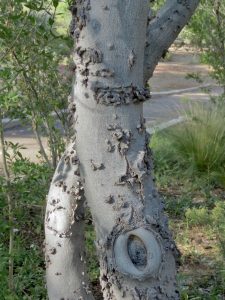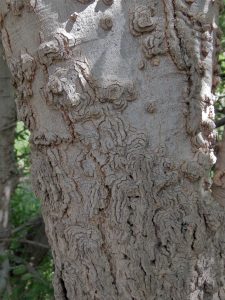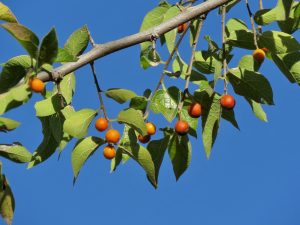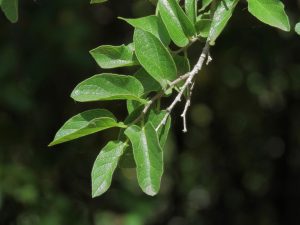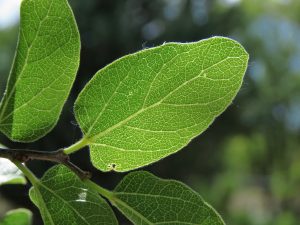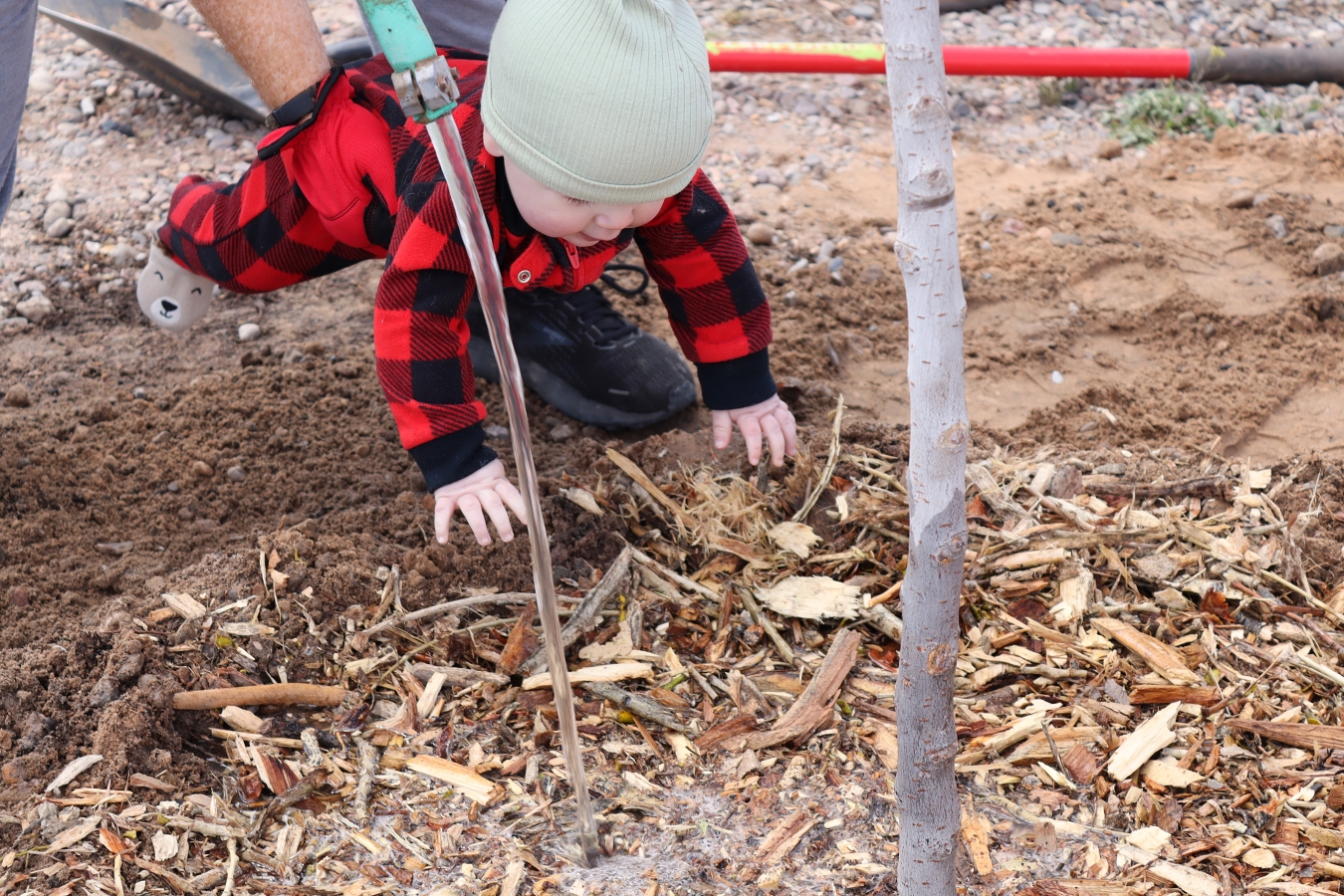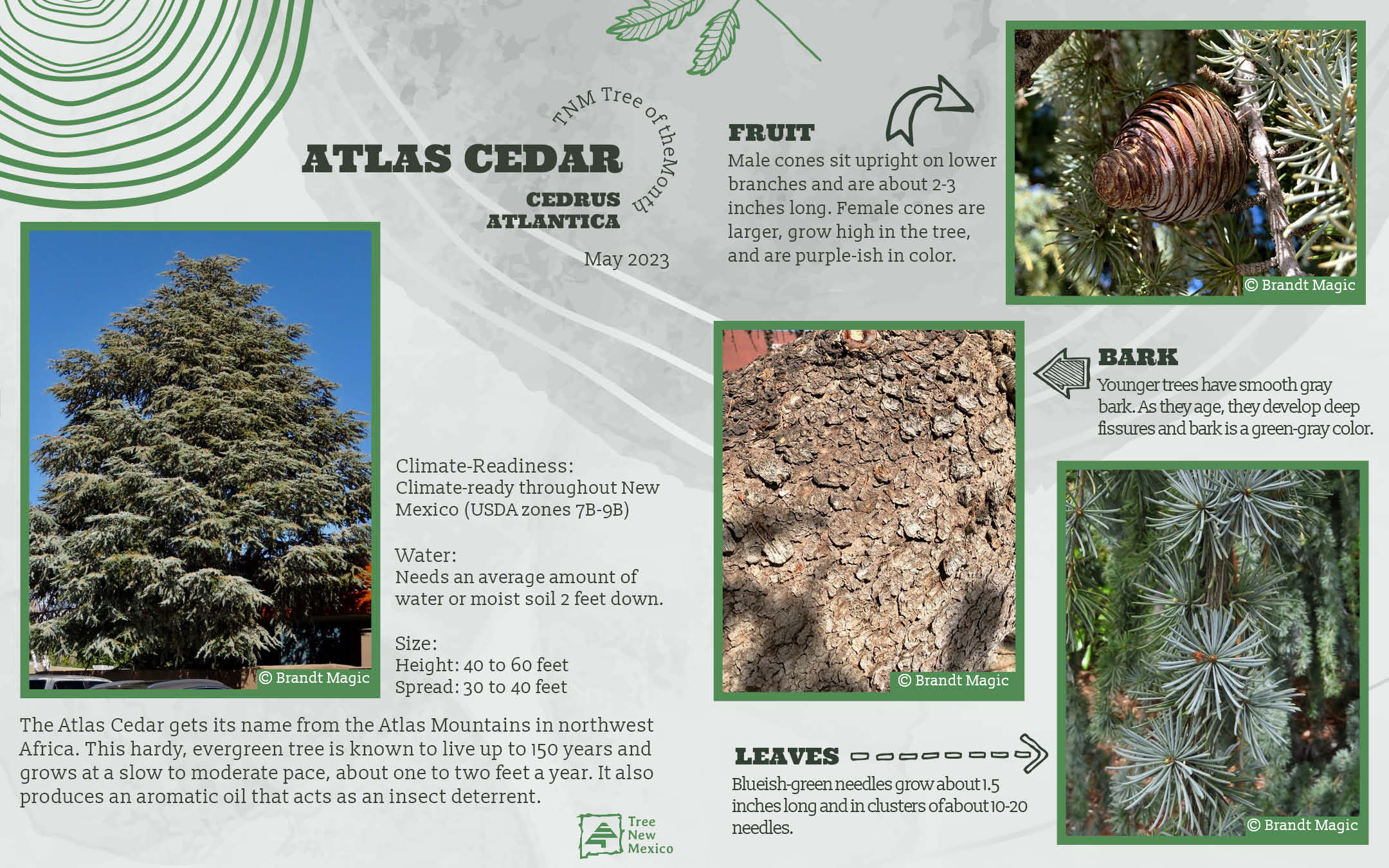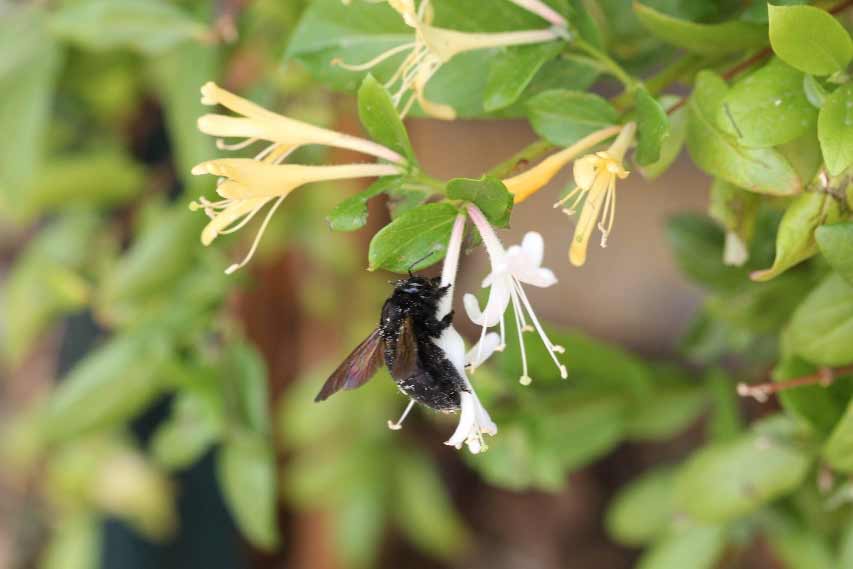
Bees and Trees that Please in New Mexico
August 31, 2022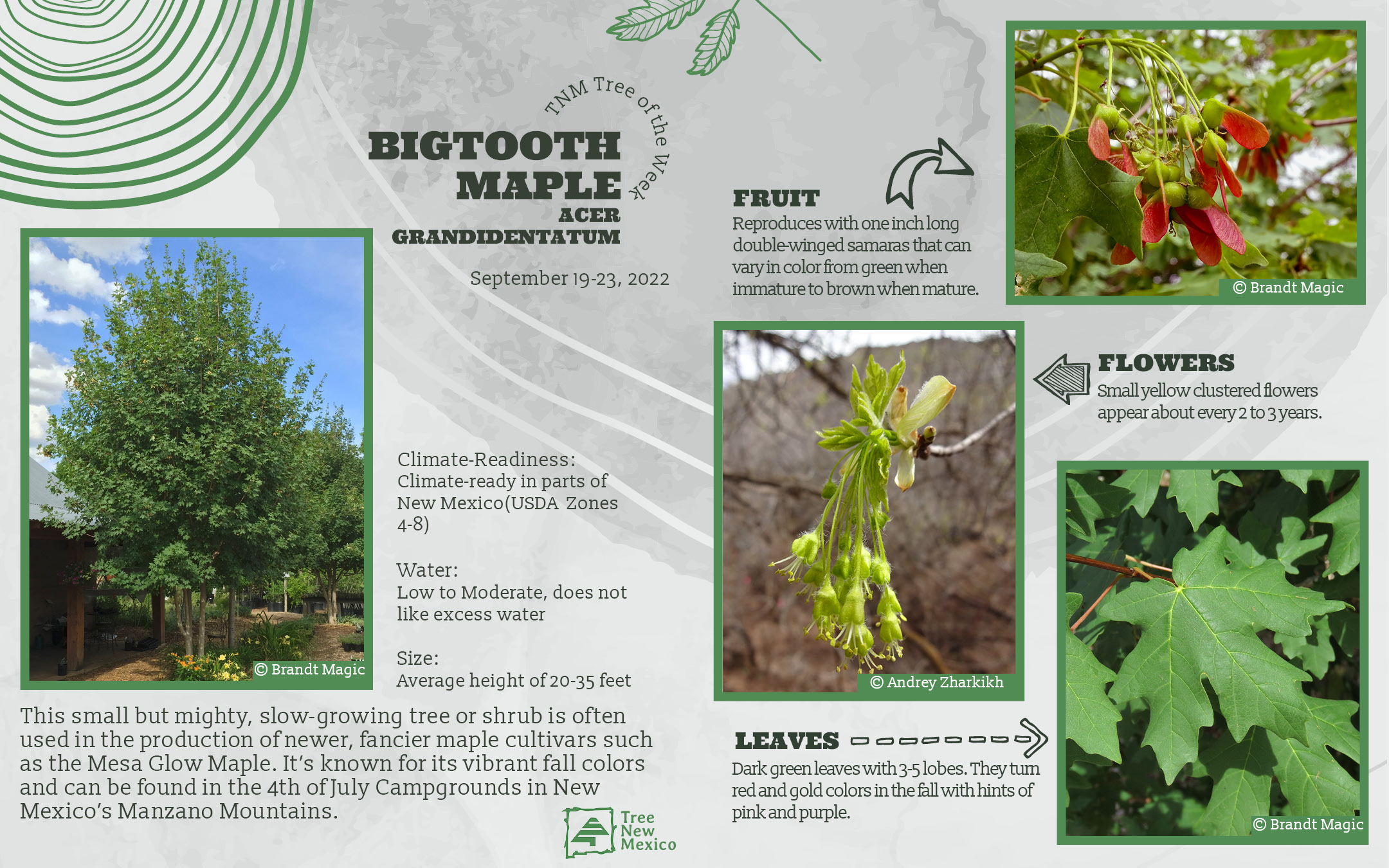
Bigtooth Maple
September 19, 2022Scientific name: Celtis reticulata
Alternate Names: Canyon Hackberry, Western Hackberry, Paloblanco
Description: Netleaf hackberry is native to much of the southwest and grows to 30 feet in height, sometimes taller, but remains shrubby when water is limited. It is extremely hardy once established. It can often be found in areas where water is present (streams, canyons, etc.) While young, it may have an asymmetrical shape, that rounds out as it matures. Its edible berries are popular to birds and other wildlife.
Leaves: The slightly heart-shaped, rough, dark green leaves have a noticeably lopsided shape. Where the leaf connects to the stem, one side of the leaf is often larger than the other. Leaves are alternate, the margins smooth, occasionally toothed near the base and strongly veined. Leaves are smaller than those of the non-native common hackberry (C. occidentalis), which is more often planted. Leaves turn yellow in autumn.
Bark: Older trees have distinctive, warty bark.
Flowers: Inconspicuous, small, greenish flowers appear in March and April. Valuable for pollinators.
Fruits: Orange-red, sweet, edible drupes about 1/4 to 3/8 inch in diameter, contain one seed. Fruits attract birds and were historically an important food source for native peoples.
Size: 30 to 60 feet in height; 30 to 50 feet in width
Elevation: Up to 7500 feet
Climate-Readiness: Climate-ready throughout New Mexico (USDA Zones 3 to 9)
Water Requirements: Can survive with 7 inches, but 18 inches precipitation equivalent for best appearance.
Habitat: This hackberry is mostly confined to areas with a constant water supply, such as river valleys or canyons. In most of Albuquerque, it requires supplemental irrigation or drains from roofs or other such catchments.
Uses: Windbreaks, landscapes, wildlife habitat & food, used as fuel and fence posts. Fruits can be eaten raw or seed and fruit both can be ground and eaten, though fruits are time-consuming to pick.
Advantages: When established, netleaf hackberries will perform admirably in urban conditions, desert heat, drought, strong winds, and dry, alkaline soils. They can thrive in lawns or xeriscapes. They also have the virtue of deep roots that won’t crack nearby pavement.
Management & Care: Can benefit from pruning to keep a more symmetrical appearance.
Pests: No serious pests, but often hosts insect leaf galls and witches broom (an occasional profusion of twigs near the ends of branches). These conditions may be seen as reducing aesthetic appeal, but they do not harm the tree.
- Netleaf Hackberry (© Brandt Magic)
- Netleaf Hackberry Bark (© Brandt Magic)
- Netleaf Hackberry Bark (© Brandt Magic)
- Netleaf Hackberry Fruit (© Brandt Magic)
- Netleaf Hackberry Leaves (© Brandt Magic)
- Netleaf Hackberry Leaf (© Brandt Magic)

